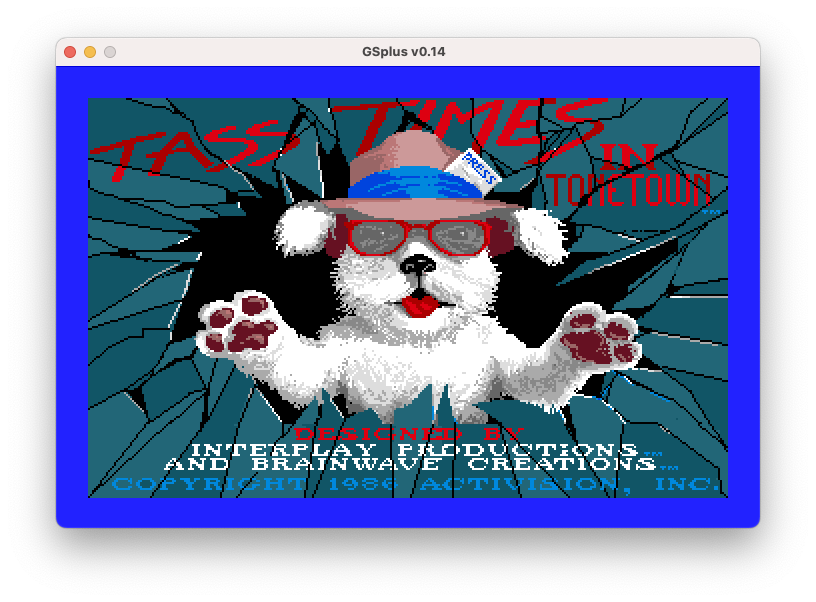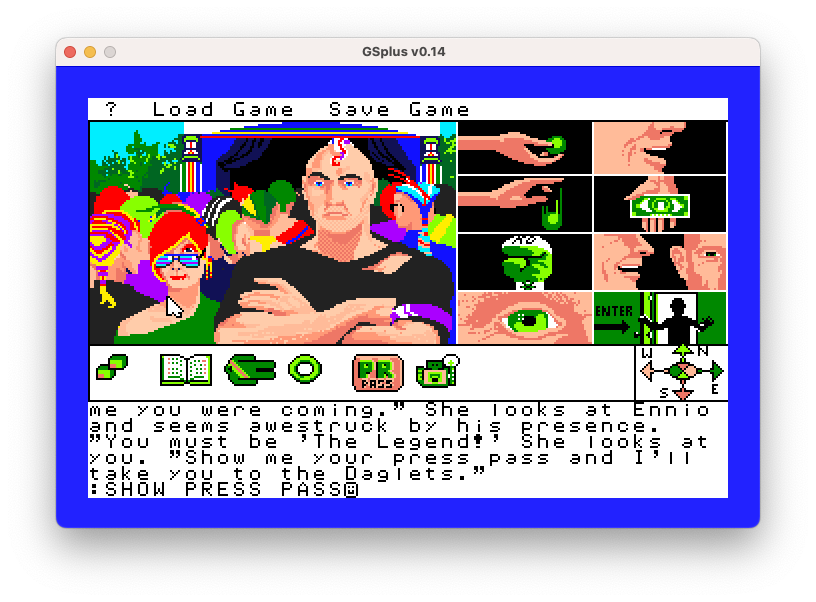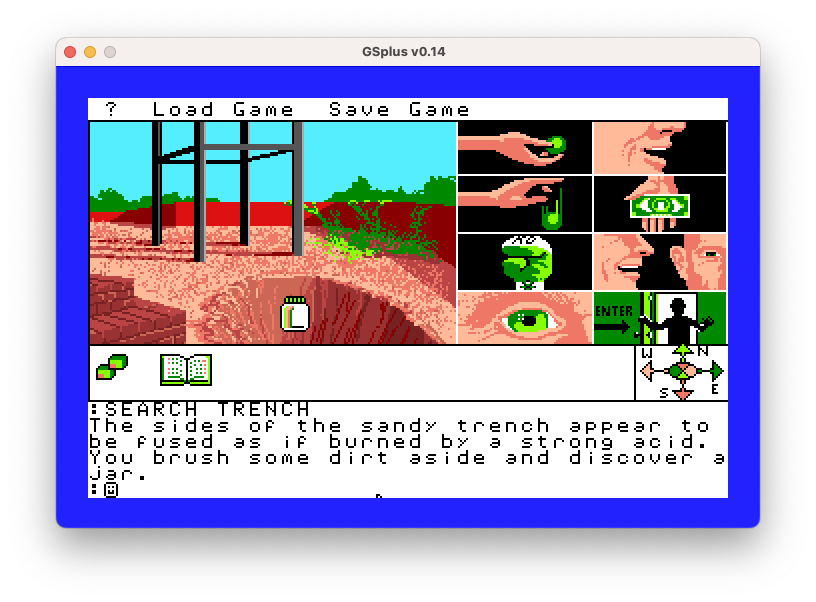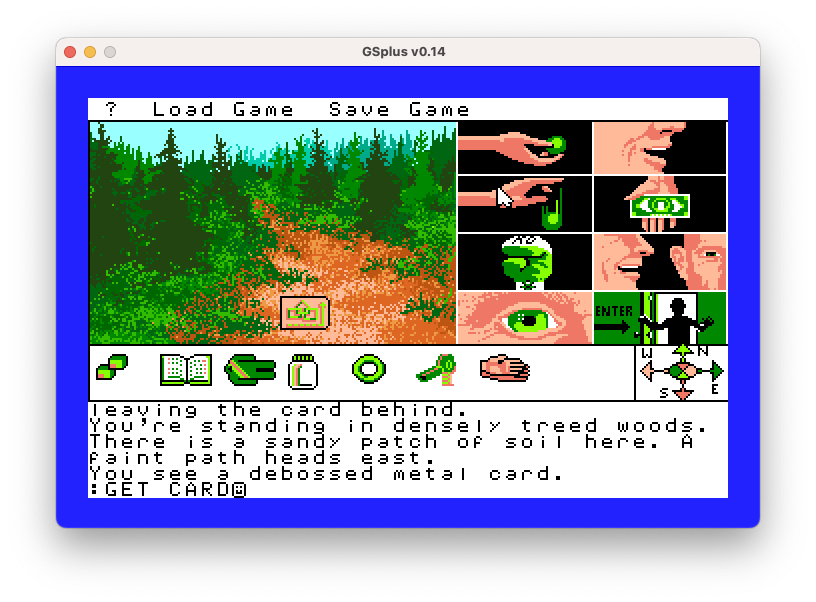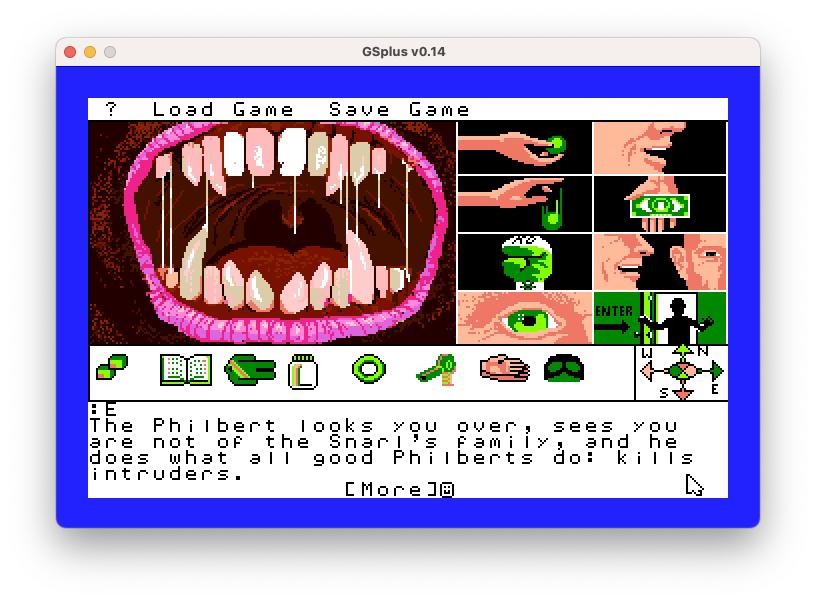Tass Times in Tonetown (Interplay Productions, Brainwave Creations) - 1986
Series: Let's Adventure! A Journey into Adventure Games (1980-1999)This review is part of the Let's Adventure! series. See all reviewed games sorted by rating here.
- ← Police Quest III: The Kindred (Sierra On-Line) - 1991
- Tass Times in Tonetown (Interplay Productions, Brainwave Creations) - 1986
- → Maniac Mansion: Day of the Tentacle (LucasArts) - 1993
Article 64 of 101 in this series.
Tass Times in Tonetown is an adventure game published by Activision in 1986. It was designed by Michael Berlyn and Muffy McClung Berlyn and programmed by Rebecca Heineman of Interplay (credited as Bill Heineman) in cooperation with Brainwave Creations.
Your grandfather has invented a device which makes real everything he can see in his dream. All the strange places and creatures he can dream about really exist in an alternate reality. One of those creatures, named Franklin Snarl, traveled through the device to our reality and kidnapped Gramps, teleporting him into the crazy world of Tonetown. He hopes that Gramps will always remain asleep, which assures Snarl’s own existence!
Now it’s up to you, the hero of the game to travel to the alternate dimension of Tonetown and to rescue your grandfather. You interact with the environment by either typing in commands, or choosing one of the action icons available as interface. The game, therefore, combines text-based interaction with the more modern “point and click” approach.1
 Would you consider this dude “tass”?
Would you consider this dude “tass”?
In the fall of 1986, Apple debuted the final computer in their Apple II line, the Apple IIgs. “GS” stood for graphics and sound, and Apple needed an impressive launch title to demonstrate the machine’s new multimedia capabilities. For this, they turned to a quirky new game published by Activision and developed by Interplay, Tass Times in Tonetown, which became the first game commercially available for the Apple IIgs.2
The game’s opening location, an abandoned cabin, provides players a non-threatening area to familiarize themselves with its unique controls. The upper-left quadrant of the screen shows pictures of the player’s location. The pictures are mostly static, but occasionally contain simple animations. To the right of those pictures are a series of clickable “command icons” which act as shortcuts to common commands such as GET, DROP, and LOOK AT. Separating the screen horizontally is a strip that displays the player’s inventory, and a compass that can be used for navigation. The bottom portion of the screen displays detailed text descriptions and has a prompt for typing commands. The pictures and text descriptions aren’t always in sync; for example, characters are frequently mentioned in the text that don’t appear in the graphics. To find every object, players will need to scour both the graphics and the accompanying text.
After exploring grandfather’s cabin, players will quickly discover something is missing: grandfather. Behind a locked door, players find one of Gramps’ inventions — a magical hoop that doubles as a portal to Tonetown, a crazy, futuristic world full of people with wild haircuts and radical clothes who hang out in totally tubular locations. Everyone in Tonetown speaks in totally tass slang, a combination of Valley Girl slang and made up future babble. Denizens of Tonetown wear hooplets, strive to look Troppo, talk on floatfones, and use guitar picks for currency.2
For a launch title released for the Apple IIGS I have to say I’m pretty impressed with both the graphics and sound - which is what the “GS” is IIGS stands for - so I guess that’s hardly a surprise. Though there were ports to multiple platforms, I chose to play through the original IIGS release as this gave me a chance to try out GSPLUS - an emulator I’ve never had an opportunity to dig into.
 GSPLUS disk image configuration screen
GSPLUS disk image configuration screen
Getting the game up and running just involved getting the emulator started (you’ll need a 2GS ROM set first), then configured point your s5d1/d2 disk drives to the images for your game. Once set and saved, quit and restart GSPLUS and it should boot directly to the game.
This took me a bit of trial and error which is why I wanted to share it in the article. Having an excuse to fiddle around with some lesser known systems and emulators without having to resort to RetroArch is a big part fo the fun for me when navigating this series.
After reading through the game’s manual you get a brief synopsis of the game you’re about to play - but it’s really not super clear:
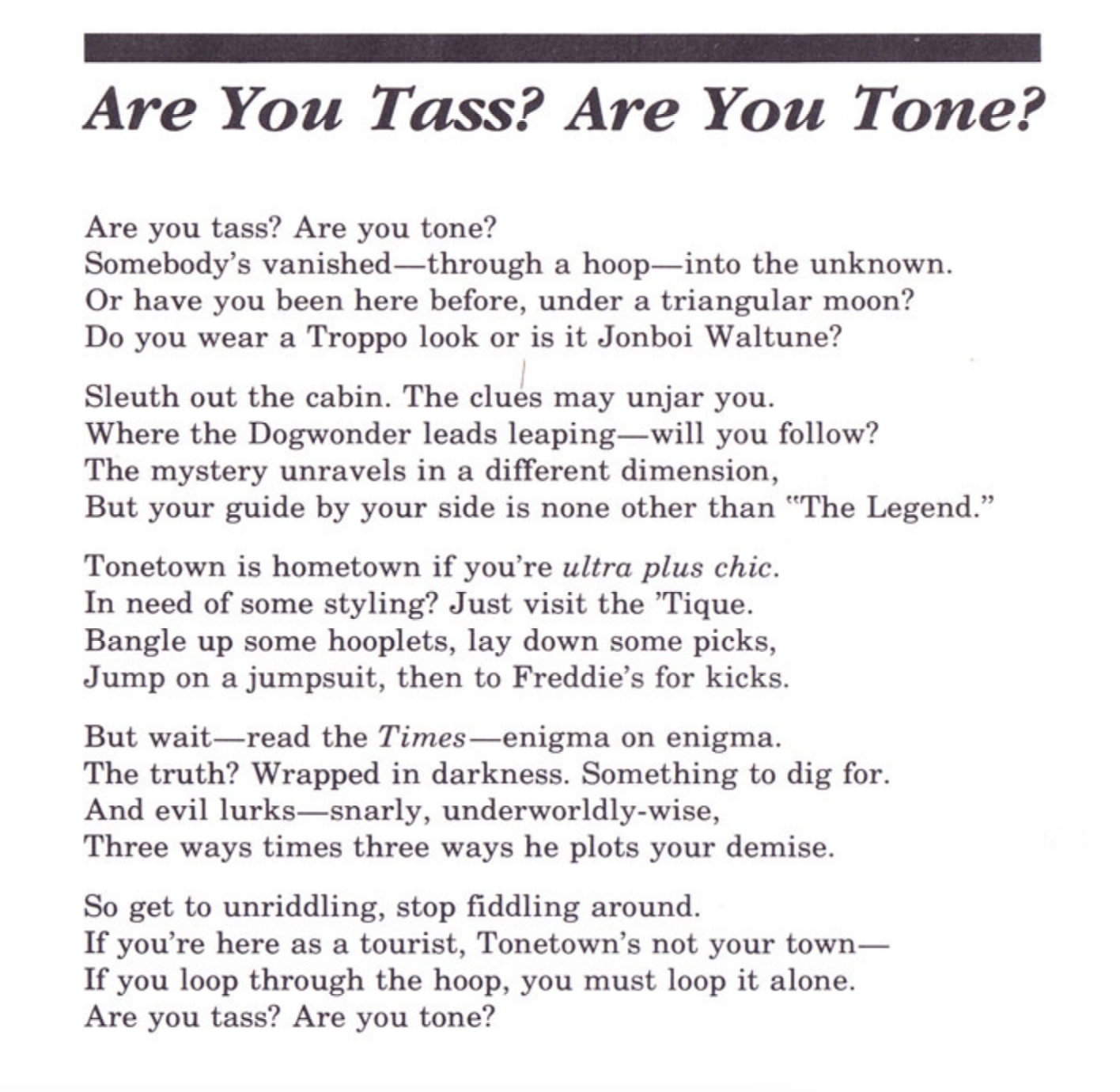 Are you tass? Are you tone? What’s “tass” or “tone” mean???
Are you tass? Are you tone? What’s “tass” or “tone” mean???
The description above actually does outline what your objective is for the game, though in the most obtuse and cryptic way imaginable. Once you boot up the disk images, you’ll find yourself in an empty cabin where the game begins. This area acts as a good training ground to get you used to the text parser, the buttons that act as shortcuts for certain verbs and the scene window.
You can click on the verb buttons to pre-fill the text parser, or you can click on the picture window to also prefill the parser. This is actually pretty novel for 1986 as it makes the game a lot more approachable - especially when you need to interact with a character and you don’t know their name. You can just click on them and fill in the rest.
The game will also show you inventory items on the screen that you can pick up. You have a limited number of inventory slots so you’ll need to leave items behind periodically to make sure you don’t run out of room. When you drop an item it will be visible on the screen, so next time you come back it’s obvious that you have left something here.
Like any good retro text-based adventure game, it is VERY easy to die. Most puzzles only have a single solution, and require you to complete a series of fetch quests to complete. Unfortunately this game can also leave you in unwinnable situations if you forget to pick up certain items. For example, the book you can pick up in the cabin before you enter the hoop - if you leave it behind you cannot win the game, and there’s no way to go back to pick it up.
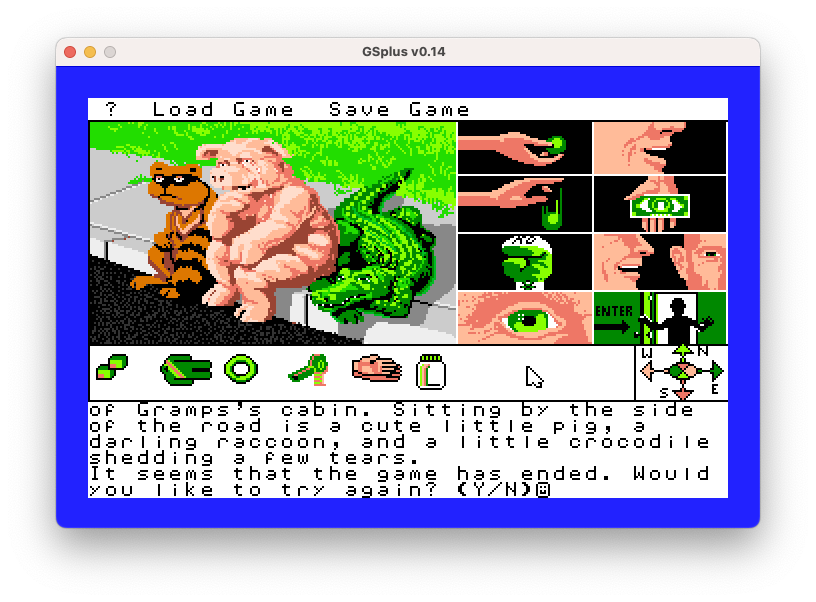 Game over. Something about animals and evil or something …
Game over. Something about animals and evil or something …
Though the puzzles can be a bit frustrating as it’s not usually obvious what you need to do to progress in this game, there is so little you can interact with and so few screens to navigate it’s not all that difficult to brute-force your way through. The game gives you multiple save slots, so you can easily save every few screens, look at everything, pick up everything, buy everything and wear everything.
Eventually you’ll find Gramps, save him from an island fortress, take him to Snarl’s and push Snarl back through the hoop. This sets everything back to normal and the game ends there.
Since I didn’t have an Apple II (or GS) as a kid I was never exposed to this game, so I have no hidden fondness for it. It looks and sounds pretty good for what it is, and the game engine (called ADVENT in the about screen, but apparently also Mindshadow) was used for a couple other games of that era.
This game has a bit of a cyberpunk feel to it, but in the opposite way. Though it’s futuristic and “punky”, everything is extremely bright, upbeat and vibrant. I honestly really enjoyed the aesthetic, even if the story itself didn’t really resonate with me.
If you enjoy parser-based adventure games this is not a bad entry and is quite approachable. The music is better than I expected, the visuals are better than I expected - but the gameplay was a bit boring.
Game Information
| Game | Tass Times in Tonetown |
| Developer | Interplay Productions, Brainwave Creations |
| Publisher | Activision |
| Release Date | 1986 |
| Systems | Atari ST, Amiga, Apple II, Apple IIGS, Commodore 64, DOS, Macintosh |
| Game Engine | Mindshadow |
My Playthrough
| How Long To Beat? | 5 hours |
| Version Played | Apple IIGS via GSPLUS |
| Notes | Walkthrough, Manual |
Score
See here for a refresher on how we’re scoring these games.
| Atmosphere (20) | 13 |
| Story (25) | 11 |
| Experience (15) | 6 |
| Impact (10) | 2 |
| 46% |
Gallery
Footnotes
Description from Moby Games ↩︎
Except(s) from All That Blitters: Tass Times in Tonetown ↩︎ ↩︎2
